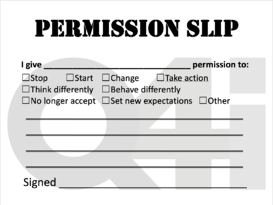Tips for Virtual Onboarding
Hiring is a tricky process. You’ve got a lot at stake, and you want to make sure you start strong. But what does hiring look like with remote employees?
You can’t have them shadow someone all day, and you can’t walk them around the office to get acquainted with the team. And onboarding goes beyond the first day–it can easily reach into the first few months after someone assumes their position.
Today, managers hiring remote employees grapple with many questions:
- How do company values integrate into the onboarding experience?
- How can new hires feel more connected to the team?
- How can new hires feel welcomed?
- What is the best way to mentor and coach new hires?
- How do you ensure the psychological safety and well-being of new hires?
Try these tips for improving the virtual onboarding experience.
Help them connect
One way to help new employees feel connected with their team and your company values is to boost both individual and group face time. Instead of merely introducing the new hire at the next team meeting, consider breaking up onboarding tasks and assigning them out to different team members to complete. For instance, if you need new employees to get a handle on your file-sharing system, your various communication channels, and your project management processes, assign each team member one task to teach them.
Don’t worry if you have overlapping subjects shared between team members. It never hurts to learn something twice, and it helps reinforce the way your company approaches communication. These one-on-one meetings give new team members a chance to question their peers about what it’s like to work for you. This opens up opportunities for your team to instill company values from the get-go.
Keep your new hires safe
Psychological safety is a crucial component of a strong company culture. Particularly in virtual environments, it’s critical to over-communicate—especially in the beginning. Creating a transparent feedback process that’s open, encouraging, and constructive will help prepare new hires to interact with your team and accomplish projects.
To counteract possible anxiety stemming from a lack of social and interpersonal cues, make an effort to expressly tell employees when their work meets or exceeds expectations—even for something small. A well-written email to a client, a clearly organized document—whatever it is, make sure you tell them. A simple “well done!” can go a long way in helping them get a feel for how well they’re performing in their new role.
Additionally, make sure you have a transparent system to catch and deal with bad behavior. Workplace bullies don’t go away just because your team is virtual. Develop a company culture that discourages any toxic behavior and a system to manage it if it occurs.
Clarify the unspoken rules
With many people suffering from increased anxiety and depression due to the pandemic, developing ways to make your work environment less stressful goes a long way in helping people acclimate to their role and to your company culture.
Every workplace has a list of unspoken rules people slowly pick up on as they acclimate to the work environment. But these rules may be harder to pick up on in a virtual work environment, leaving employees to guess what’s acceptable and what’s not. For instance:
- Is it okay to turn off cameras for a short time during long meetings?
- Is it acceptable to take a break and go for a walk in the middle of the day?
- Are you expected to respond immediately to messages on Slack?
- How are you expected to dress for internal and external meetings?
Make a list of unspoken company rules available to your team members. This will relieve stress and help your new employees settle in quicker and easier.
It’s a team effort
When approached with a collective mindset, onboarding becomes easier than leaving it to one person to guide a new employee through the first few months in their role. A team approach encourages new workplace friendships, better communication, and clearer company culture. Consider doing a post onboarding survey to gauge what you did well and what needs improvement. Keep looking for new ways to engage your team members, both new and old. Virtual work environments don’t have to be lonely and isolating.
Give your team a structure for clear communication, community, and connection, and watch them thrive.
Photo by mavoimage
Content provided by Q4iNetwork and partners
![]()


